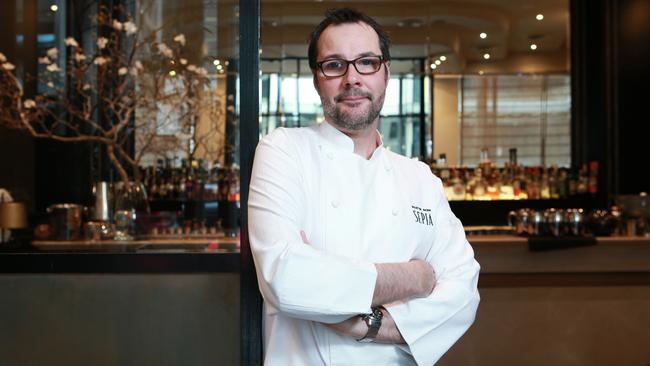Quay, Brae, Sepia and the World’s 50 Best Restaurants awards
The annual World’s 50 Best list is upon us, and signs are that Aussie diners have fared badly. But are we really that bad?

The annual circus that is The World’s 50 Best Restaurants awards began overnight in New York with the release of a second-tier 51-100 list, and Australia has fared poorly.
Just two Australian restaurants have been recognised in the collection, Sydney’s Quay (98) and Victoria’s Brae (65). Melbourne’s Attica will again be the only Australian restaurant in the 50 Best when the list-proper is announced next Tuesday morning Australian time.
Perth-raised chef David Pynt, a partner in Singapore’s Burnt Ends, hit the list for the first time this year, at 70. The other prominent Australian in Singapore, Tetsuya Wakuda, has slipped off the list with his Marina Bay Sands restaurant Waku Ghin.
On the questionable ranking system of the list, Quay’s “bestness” has slipped 40 positions, from 58 last year; on the other hand, Brae, in Victoria’a Western District, has moved up 23 places, from 88.
The apparently declining fortunes of Australia’s elite restaurants comes at a time when the landscape for “fine dining” is rapidly changing. In the past month, Melbourne’s Andrew McConnell has announced the closure (and reinvention as a Chinese restaurant) of Moon Under Water. Sydney chef Mark Best has called time on his Surry Hills haute dining institution Marque after 17 years. And, faced with serious rents and not enough business, restaurateur Neil Perry also pulled the pin on his flagship restaurant Rockpool, saying the Bridge Street space would be reinvented as something less formal.
A surprise omission from either tier of the world’s “best” restaurants is Sydney’s Sepia. We know this because the restaurant has not ben invited to attend the ceremony next week. Here, too, change is afoot with proprietors Martin Benn and Vicki Wild having made the decision not to renew their Sussex Street lease when it ends in 2018, flagging a whole new post-Sepia venture and direction.
The World’s 50 Best list, increasingly a collection of “hottest and most talked about” rather than “best,” and heavily influenced by public relations operatives and tourism bodies getting “influencers” to key restaurants, is compiled each year with the voting of 30-person panels from regions around the globe.
Australia’s fortunes on the list rely heavily on the dining traffic of international panellists.
It is generally conceded that chefs who spend large parts of the year travelling, spruiking, attending the myriad food festivals and intellectual love-ins, such as Mad Feed, attract the greatest number of voters throughout the year.
“There is zero correlation between being the best talker and having the best ideas,” Sepia chef/owner Martin Benn said today, commenting on the mercurial nature of the annual pronouncements. His restaurant was last year ranked at 84 and anointed with the blessing The One To Watch. The same thing happened to Marque in 2010, disappearing from the list the following year.
“I truly believe that we are cooking better now than we did two years ago,” said Benn, whose restaurant’s fleeting appearance on the second-tier list fuelled speculation it would soon “crack” the 50.
“I tell you this, I plan to change the game and not let the game change me,” said Benn, who emphasised he was happy for those Australians recognised by the system. “Hand on heart, for the past year I have spent every day in my restaurant. Perhaps we have paid the price for this. (But) let’s put it this way, I didn’t come this far to only come this far.”
As reported here previously, it will be announced within the week, in New York, that Australia will host the 2017 awards.
The author has in the past been an Australian voting panel member, but is no longer.
